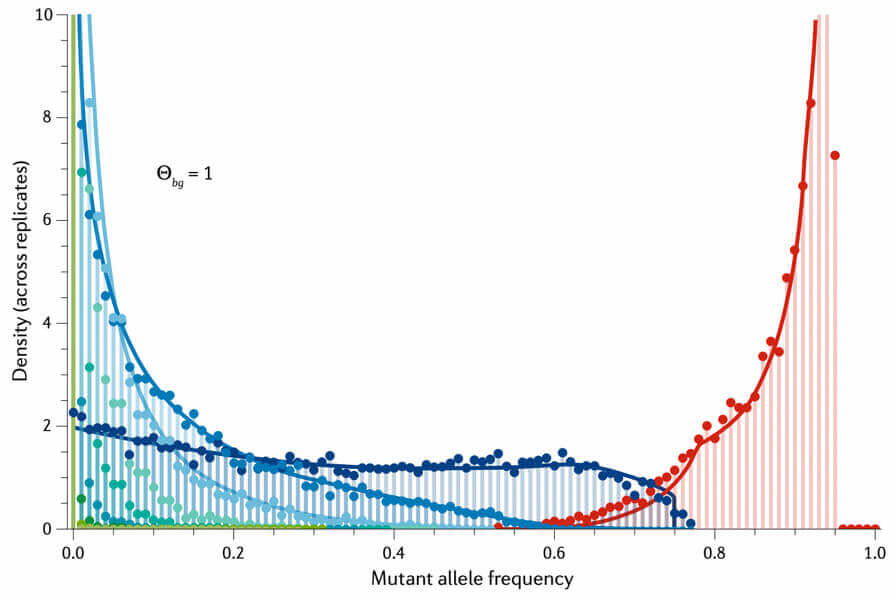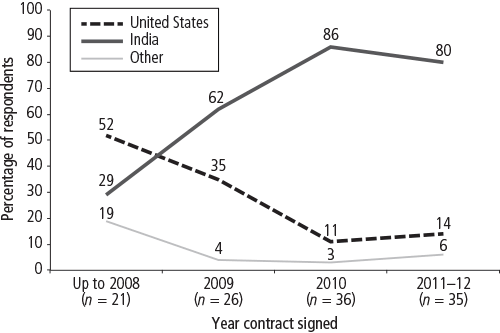
The ability to efficiently analyze and improve complex processes is paramount for managers and leaders. Mixed-Model Design of Experiments (DOE) is a critical methodology for achieving this goal. By integrating fixed and random effects, mixed-model DOE allows a nuanced examination of how various factors interact within complex operational systems. This approach enhances decision-making and significantly improves the precision and reliability of experimental outcomes in process improvement industries.
As we delve deeper into the fundamentals of Mixed-Model DOE, we will explore its core concepts, distinct advantages for complex operations, and the practical steps for implementation. This exploration will equip you with the knowledge and tools to leverage mixed-model DOE to optimize operational experiments and achieve significant process improvements.
Key Takeaways
- Mixed-Model Design of Experiments (DOE) significantly advances the ability to analyze and improve complex operational processes by integrating fixed and random effects.
- Key components of Mixed-Model DOE, including fixed effects, random effects, and interactions, provide a comprehensive framework for understanding complex data sets and operational experiments.
- The methodology offers enhanced flexibility in experiment design, allowing for the tailored analysis of complex systems and more accurate, generalizable experimental outcomes.
- Implementing Mixed-Model DOE involves a systematic process, from defining objectives to data analysis and applying findings, leading to substantial operational improvements.
Fundamentals of Mixed-Model Design
What are Mixed Models?
Mixed models incorporate fixed and random effects within a single analysis, offering a robust framework for exploring complex data sets. In the context of DOE, fixed effects are those variables of primary interest and systematically varied during the experiment. These could be factors like temperature settings on a machine or different levels of a chemical additive. On the other hand, random effects account for variations that cannot be controlled or are of secondary interest, such as batch-to-batch variability or differences in raw material sources.
Key Components of Mixed-Model DOE

Image Source: Wikimedia Commons
The key components of the Mixed-Model Design of Experiments (DOE) provide a deeper understanding of how this approach is utilized to dissect and interpret the complexities of operational experiments. Let’s explore each component in more detail:
a. Fixed Effects
Fixed effects in a mixed-model DOE are the primary factors researchers or experimenters aim to evaluate. These factors are explicitly controlled and varied within the experiment to discern their direct influence on the outcome or response variable.
For example, in a manufacturing process improvement study, fixed effects might include the temperature of a machine, the pressure applied during a process, or the concentration of a specific chemical additive. The systematic variation of these factors allows experimenters to measure their impact accurately, understand optimal levels, and predict how changes in these factors influence the final product quality or efficiency.
Characteristics of Fixed Effects:
- Controlled Variation: Experimenters deliberately change these factors across different levels to observe the effects on the response.
- Direct Impact: The main hypothesis tests in the experiment are typically focused on these factors.
- Predictability: The effects of fixed factors are consistent and predictable, facilitating clear conclusions and actionable insights.
b. Random Effects
Random effects account for the inherent variability in the experiment, which is not the primary focus but significantly influences the results. This variability could stem from multiple sources, such as environmental conditions, batch differences, or machine-to-machine variations.
Unlike fixed effects, random effects are not controlled by the experimenter. Instead, their impact is estimated statistically to understand how they contribute to the observed variability in the response variable.
By including random effects in the model, experimenters can make more generalized conclusions that account for unseen or uncontrollable factors, enhancing the external validity of the experiment’s findings.
Characteristics of Random Effects:
- Uncontrolled Variability: These effects arise from fluctuations that the experimenter does not directly manipulate.
- Statistical Estimation: The influence of random effects is quantified through statistical models, allowing for a more accurate interpretation of fixed effects.
- Generalizability: Accounting for random variability helps ensure that the experiment’s conclusions apply to a broader range of real-world conditions.
c. Interactions
Interactions between factors are a critical component of mixed-model DOE, revealing how one factor’s effect depends on another’s level. These interactions can illuminate complex dynamics that might be obscured when examining factors in isolation.
For instance, the impact of a chemical additive on product quality might vary significantly at different temperatures, suggesting an interaction between these two factors. Recognizing and analyzing these interactions allows experimenters to uncover optimal combinations of factor levels that maximize or optimize the response variable.
Characteristics of Interactions:
- Complex Relationships: Interaction terms capture the combined effects of two or more factors, which can either enhance or mitigate each other’s impact on the response.
- Enhanced Insight: By examining interactions, experimenters gain a more nuanced understanding of the system being studied, leading to more informed decision-making.
- Optimization Potential: Identifying significant interactions is key to optimizing processes, as it can reveal conditions under which the system performs best.
The comprehensive analysis of fixed effects, random effects, and interactions within a mixed-model DOE framework allows for a deeper understanding of complex operational systems. This approach not only aids in identifying the primary drivers of outcomes but also accounts for variability and uncovers the synergistic effects of different factors, providing a robust basis for making informed improvements to processes.
Advantages of Mixed-Model DOE in Complex Operations
Mixed-Model Design of Experiments (DOE) offers a sophisticated framework for analyzing complex systems where multiple factors and their interactions influence the outcome. This approach is particularly beneficial in operational settings characterized by inherent variability and intricate dependencies.

Image Source: Maricopa Open Digital Express
The advantages of employing mixed-model DOE in such environments are manifold and can significantly impact experimental findings’ efficiency, accuracy, and generalizability.
Enhanced Flexibility in Experiment Design
One of the primary advantages of mixed-model DOE is the flexibility it offers in designing experiments. Unlike traditional experimental designs that may restrict the analysis to fixed factors alone, mixed models accommodate fixed and random effects. This dual capability allows experimenters to tailor their studies to the specific characteristics of complex operational systems, where both controllable factors and inherent variability play crucial roles.
- Adaptability: Mixed-model DOE can be adapted to various experimental scenarios, ranging from simple two-factor studies to complex designs involving multiple levels and interactions.
- Customization: Researchers can customize their experiments to focus on key factors of interest while accounting for background variability, enhancing the relevance and applicability of the results.
Ability to Handle Hierarchical or Nested Data Structures
Complex operations often involve hierarchical or nested data structures, such as products produced by different machines, which in turn are located in various factories. Mixed-model DOE is adept at analyzing such data by correctly attributing variance at each level of the hierarchy, thereby improving the conclusions’ accuracy.
- Nested Random Effects: By incorporating random effects at different levels, mixed models can accurately reflect the real-world structure of the data, leading to more precise estimates of the effects of interest.
- Hierarchical Analysis: This approach allows for data analysis across multiple levels, providing insights into factors that operate at the group level (e.g., machine-specific effects) versus global ones (e.g., overall process changes).
Improved Accuracy and Efficiency in Analyzing Complex Operational Data
Mixed-model DOE enhances the accuracy and efficiency of data analysis in complex operational experiments by more effectively accounting for variability and dependencies among factors.
- Variances and Covariances: Mixed models estimate not only the effects of the factors but also the variances and covariances associated with random effects. This leads to a more nuanced understanding of the system’s behavior.
- Efficient Use of Data: By leveraging all available data and appropriately modeling the sources of variability, mixed-model DOE can provide more reliable and robust insights, even in complex, multi-level data structures.
Enhanced Interpretability of Results
The mixed-model framework facilitates a clearer interpretation of experimental results by distinguishing between the variability due to fixed factors and that due to random factors. This distinction helps understand the true impact of controlled changes on the outcome, independent of background noise.
- Clear Causal Inferences: By accurately attributing effects to their sources, mixed-model DOE supports more robust causal inferences, crucial for making informed decisions in process improvement.
- Actionable Insights: The clarity in interpreting results provided by mixed-model DOE translates into actionable insights, enabling managers and leaders to implement targeted improvements more confidently.
Generalizability of Findings
Finally, incorporating random effects in mixed-model DOE enhances the generalizability of the findings. By accounting for uncontrolled variability, the results of experiments are not limited to the specific conditions under which they were conducted but can be applied more broadly.
- Wider Applicability: The ability to generalize findings across different settings and conditions is precious in complex operations, where replicating exact experimental conditions may be challenging.
- Robust Decision-Making: Enhanced generalizability supports robust decision-making, allowing leaders to apply insights derived from mixed-model DOE across various operational contexts with greater assurance of their validity.
The advantages of mixed-model DOE in complex operations are extensive, offering unparalleled flexibility, accuracy, and depth of analysis. By harnessing these benefits, organizations can not only navigate the intricacies of their operational processes more effectively but also drive substantial improvements in efficiency and performance.
Implementing Mixed-Model DOE in Complex Operations

Image Source: Australian Institute of Family studies
Implementing a Mixed-Model Design of Experiments (DOE) in complex operations involves a systematic approach to planning, executing, and analyzing experiments. This section provides a comprehensive guide to the steps required, simplifying the process into manageable stages. By following these steps, managers and leaders can effectively apply mixed-model DOE to gain insights and improve operational processes.
Step 1: Define the Objective
The first step in any experimental design is clearly defining the study’s objective. Objectives can range from identifying the factors that influence a process outcome to optimizing the levels of certain variables for improved performance. Clearly defined objectives guide the selection of factors and the structure of the experiment.
Example: A manufacturing company aims to reduce a product’s strength variability. The objective could be identifying the process parameters (temperature, pressure, material mix) that significantly affect product strength.
Step 2: Select Factors and Levels
Identify the factors (variables) to be studied based on the objective. Factors are classified into fixed and random effects. Fixed effects are those variables you intend to manipulate or control, while random effects are sources of variability that you want to account for in the analysis.
Fixed Effects Example: Temperature and pressure settings on a machine.
Random Effects Example: Variability between different machines or shifts.
For each fixed effect, decide on the levels (the specific values or settings) to be tested. For random effects, identify the groups or categories to be included.
Step 3: Choose the Design Type
Selecting the appropriate mixed-model design type is crucial. The choice depends on the objective, the factors and levels selected, and the complexity of the data structure (e.g., nested or crossed). Standard designs include split-plot, repeated measures, and hierarchical designs.
Example: If the objective is to study the effect of material mix (a fixed effect) at two different settings of machines (a random effect), a split-plot design might be appropriate, where the whole plot factor is the machine setting, and the subplot factor is the material mix.
Step 4: Collect Data
Plan and execute the experiment according to the selected design. Data collection should be meticulous, with careful attention to maintaining the specified levels of the fixed effects and accurately recording the conditions under which each measurement is taken.
Data Collection Tip: Use standardized forms or digital tools for data collection to minimize errors and ensure consistency.
Step 5: Analyze the Data
Once data collection is complete, use statistical software to analyze the results. The analysis will typically involve fitting a mixed model to the data, which estimates the effects of the fixed factors while accounting for the variability due to random effects.
Software Example: Tools like R (lme4 package), SAS (PROC MIXED), or SPSS can perform mixed-model analysis.
Analysis Tip: Begin with a basic model and iteratively add complexity (e.g., interactions, nested effects) as needed, checking each time for improvements in model fit.
Step 6: Interpret the Results
Interpreting the results involves determining the significance of the fixed effects, understanding the variance components associated with random effects, and making inferences about the interactions between factors.
Interpretation Example: If temperature and material mix significantly affect product strength, and there’s a notable interaction between them, the optimal conditions for minimizing variability in product strength can be identified.
Step 7: Implement Findings and Monitor
Apply the insights from the analysis to make informed changes in the process. It’s crucial to monitor the outcomes of these changes to ensure they have the desired effect.Implementation Example: Adjust machine settings to the optimal temperature and material mix, then track the resultant product strength over time to assess improvements.
Conclusion
Mixed-Model Design of Experiments (DOE) offers a sophisticated and flexible approach to tackling the complexities of operational experiments, enabling managers and leaders to enhance decision-making and operational efficiency. By integrating fixed and random effects, mixed-model DOE allows for a nuanced analysis of how various factors interact within complex systems, ensuring accurate and generalizable results.
Through a systematic implementation process—from defining objectives and selecting factors to analyzing data and applying insights—this methodology paves the way for significant process improvements. The advantages of mixed-model DOE, including its ability to handle hierarchical data structures and provide enhanced interpretability of results, make it an invaluable tool for optimizing complex operations and driving sustainable progress in process improvement industries.
At Air Academy Associates, we specialize in empowering professionals with the knowledge and skills to optimize complex processes through our Operational Design of Experiments Course. This comprehensive, self-paced online course covers everything from basic statistics to advanced test designs, offering practical tools and strategies for maximizing efficiency and effectiveness in operational settings. Enroll today!


